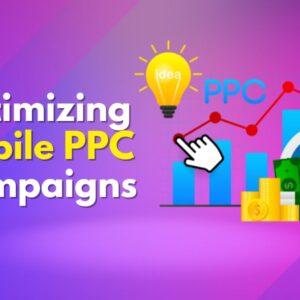Google display ads, also known as the Google Display Network (GDN), provide a powerful way to reach new audiences and increase brand awareness. The GDN includes over 2 million websites and reaches 90% of Internet users worldwide. With the right strategies, display ads can drive more traffic, leads, and sales for your business. This comprehensive guide outlines the latest and most effective methods to optimize Google display campaigns.
Research Your Target Audience
The key to any successful display ad campaign is understanding your target audience. Research who they are, their demographics, interests, pain points, and where they spend their time online. Use tools like Google Analytics and Facebook Audience Insights to gather insights. Define your ideal customer avatar so you can create targeted ad creatives and choose niche inventory with high relevance. Focusing on specific user intent signals will improve click-through and conversion rates.
Optimize Ads for Viewability
Viewability is a metric that determines if users actually see your ad. Google now only charges advertisers when display ads are viewed for at least 1 second by a real person. To improve viewability:
- Design ads with eye-catching elements above the fold
- Use animations and video – movement attracts attention
- Leverage the first 5 seconds when viewers are most engaged
- Test different ad formats like native, lightbox, and expandable ads
Prioritizing viewability results in higher ad recall and conversion rates. Google also rewards highly viewable ads by charging you less per impression.
Retarget Engaged Visitors
Retargeting means showing ads to people who have previously interacted with your brand. This targets users who are already familiar with your products or services and may be more likely to convert. You can create custom audiences for retargeting in Google Ads based on:
- Time on site
- Page views
- Site behavior – cart abandoners, subscribers, etc
Then build remarketing campaigns tailored to each audience segment. For example, show coupon codes to cart abandoners and new product updates to frequent site visitors. Google’s store visit conversions also lets you re-engage users who visited your physical locations.
Expand Reach with Similar Audiences
Targeting similar audiences helps expand the campaign reach to more potential customers. Google determines common attributes of your existing remarketing lists like interests, lifestyle, and demographic data. Then it finds new users who share those characteristics for lookalike targeting. This exposes your brand to relevant audiences that are likely to convert.
To use similar audiences:
- Build remarketing lists with at least 100 users
- Let the lists accumulate data for a few weeks before targeting
- Start ads with a broad match to gauge performance
- Gradually narrow targeting as you collect insights
Optimize Ad Copy and Creatives
Compelling ad copy and visuals boost click-through rates. Follow these best practices:
- Highlight benefits – Focus on how your product or service solves customer pain points
- Use emotional triggers – Appeal to desires for convenience, status, etc
- Be specific – Include concrete details like pricing and product features
- Localize your message – Adapt language and examples based on target locations
- Experiment with different headlines, images, and calls-to-action – See which variants perform best
- Make ads stand out – Use logos, and custom fonts and ensure text contrasts well against the background
A/B test at least 3 ad variations per campaign to determine the optimal copy and creatives. This maximizes relevance for users.
Use Dynamic Remarketing Ads
Dynamic remarketing ads update creatives in real-time based on a user’s previous site interactions. For instance, someone who viewed specific products will later see an ad with those same items. This primes users to take action by reminding them exactly what caught their interest.
To implement:
- Enable ‘remarketing’ in your Google merchant center account
- Create a remarketing tag in Google Ads and add it to all site pages
- Upload product feed to merchant center
- Create a display campaign with a ‘dynamic’ ad format
The key benefit of dynamic ads is increased relevancy and higher conversions from interested users.
Leverage Advanced Audience Targeting
Google offers robust options to target users based on demographic, behavioral, and contextual signals. Take advantage of these to refine campaigns:
- Demographic – Target by age, gender, parental status, etc
- In-market – Reach those actively looking to buy certain products or services
- Affinity – Target based on lifestyle habits and brand affinity
- Custom intent – Create audiences tailored to your business goals
- Location – Target by city, metro, zip code, and physical proximity
- Contextual – Place ads on relevant sites and pages
Layering on multiple targeting methods increases qualification and improves campaign efficiency.
Set up A/B Ad Testing
The only way to definitively determine the best ad variations is through A/B split testing. Set up experiments in Google Ads:
- Compare at least 2 ad versions side by side
- Keep ad copy elements consistent and alter visuals
- Use automated bid strategies for consistent budget allocation
- Let tests run for at least 2 weeks with equal traffic distribution
- Judge performance based on cost per conversion or return on ad spend
Many factors impact display ad results – creative, banner size, placement, etc. Testing different combinations is key for optimization.
Measure Beyond Clicks and Impressions
The true value of display is derived from actions beyond clicks and impressions. To fully gauge performance, track metrics like:
- Viewability – Percentage of ads appearing on-screen
- View rate – Ratio of views to impressions
- Click-through rate– The percentage of ad impressions that resulted in clicks
- Cost per click – Average cost you pay per click
- Conversion rate – Percentage of clicks becoming conversions
- Return on ad spend – Revenue generated per dollar spent
With robust measurement, you can accurately assess display impact and fine-tune campaigns to drive even better results.
Conclusion
Google display ads provide a versatile channel to increase brand visibility and sales. By following the strategies outlined in this guide, you can create highly targeted, optimized, and measurable ad campaigns. The key steps include thoroughly researching your audience, improving ad viewability, expanding reach with remarketing, refining your copy and visuals, leveraging advanced targeting options, and robustly measuring performance. With in-depth customer knowledge, well-designed ads, and rigorous split testing, your Google display ads will deliver tremendous value.










